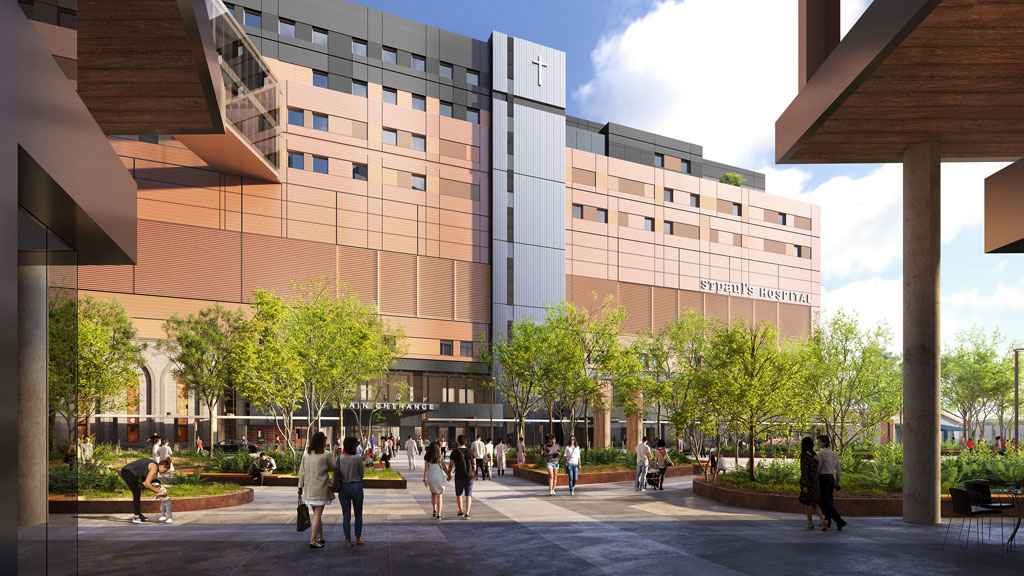Chris Gower, COO, buildings at PCL Construction, sums up the current construction industry climate as “incredibly challenging times.”
While the COVID-19 pandemic may have weakened global supply chains, factors beyond the pandemic are also driving volatility in the market, leading to increasing construction costs.
“The strain is everywhere,” said Gower. “What we’re seeing right now is that compounding effect and it’s made worse by an increase in demand.
“I expect in the next six months there could be a lot more projects that are deferred and or cancelled. We’re seeing that in the U.S. too. I think there is so much work out there that most general contractors will do OK…
“We are seeing right now on the private side that we are at that breaking point because of construction inflation and interest rate increases. The two together are making some projects not viable.”
Adding further complexity is supply chain issues are constantly changing and it’s not just one product that is affected.
“It’s concrete shortages today and there are some issues with powder being unavailable but tomorrow it’s going to be something different. For as much as we figure out what the current issues are of the day, in a week, two weeks, three weeks’ time they change again.
“You have to watch the projects with the products that are in short supply.”
One of the biggest challenges right now is getting mechanical and electrical equipment.
“We’re seeing upwards of double the time it normally takes to get a product,” said Gower. “The only thing we can do is order it early…warehouse it, put it in a place where you know you have it. That’s our natural defence against delayed deliveries is order them a lot earlier. That means you’ve got to pay up front, you’ve got to pay for storage, you’ve got to pay for insurance so it adds expense.”
Large hospitals and health care facilities requiring significant mechanical electrical equipment are most at risk for delays. He used St. Paul’s Hospital in B.C. as an example.
“We ordered the products very early and have a very large order house to protect our interests,” Gower said. “On a project like St. Paul’s where it’s a public-private partnership, if we’re late we pay significant penalties, so inevitably lots of projects are late because of supply chain issues. Where we have a major expense we’re obviously working very hard on that particular project to mitigate those expenses.”
Getting concrete is also a challenge partly because of strikes and plant issues, said Gower. He touched on three different markets across Canada. Alberta has not seen any shortages yet which he says is due to two factors: proximity to Lafarge’s largest plant in Canada and the market isn’t hyper busy.
On the other hand, in the busy B.C. market, there were labour strikes and product had to be shipped in from Alberta to shore up some of the issues.
In the Ontario and Toronto area, there was a recent kiln failure at St Marys Cement.
“That’s a moment in time. It’s not something that lasts forever but it did create supply issues,” said Gower. “There is just an overall general reduction in powder. That’s a market issue and combined with an extremely busy market you just don’t have enough product to meet the need.”
Getting precast girders has also been an issue and certain bridge and road projects could be impacted, he added.
Gower said the industry will likely be dealing with inflationary issues for the next couple of years.
“The Canadian government is spending so much money on hospitals and infrastructure, subways,” he noted. “You’re going to see a fairly high demand for construction services and therefore prices are going to remain high.”
So far, PCL has had to deal with a couple of project cancellations on the private side, including a low-income housing project.
“Ultimately the cost is too high for the private developer to recover its expenses and make the profit they are looking for,” Gower pointed out.
“That is becoming increasingly complicated because the public sector, the government, isn’t slowing down. They keep spending and they can afford higher budget increases. The private side has a much more difficult time making it make financial sense.”
The good news is many in the industry are aware of the issues and are taking steps to deal with it.
“In this market if one thing trumps all things it’s relationships and collaboration. We can’t figure it out on our own because there are too many moving parts,” said Gower.
“There’s a network of people that you can work with and collaborate with to solve the issue and that inevitably delivers a better outcome.”
Follow the author on Twitter @DCN_Angela











Recent Comments
comments for this post are closed